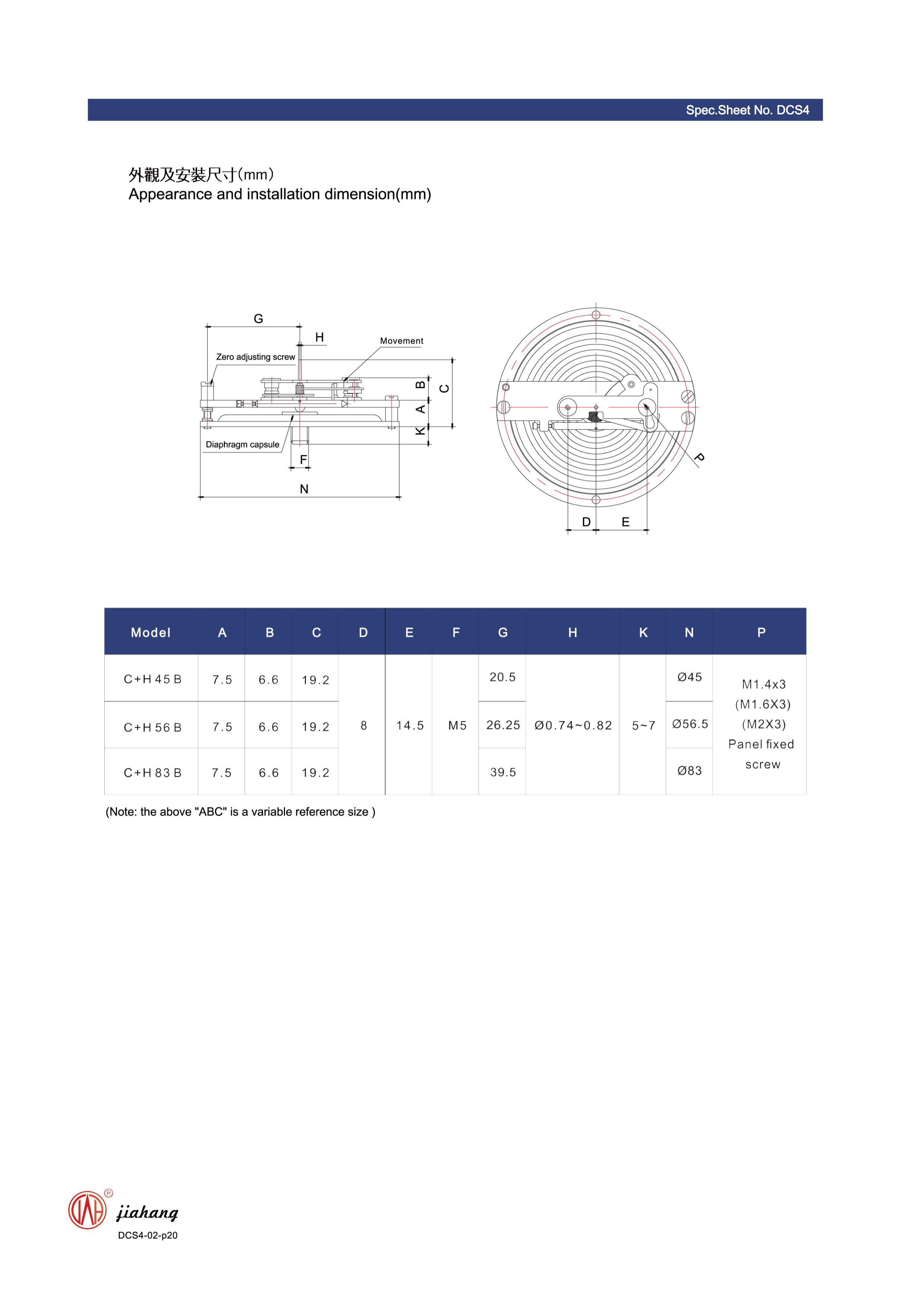
Nov . 25, 2024 10:39 Back to list
Top-Quality Components for Reliable Pressure Gauge Performance and Accuracy
Understanding High-Quality Pressure Gauge Components
Pressure gauges are essential instruments in various industries, measuring the pressure of gases and liquids within systems. The accuracy and reliability of these measurements largely depend on the quality of the components used in the construction of the gauges. High-quality pressure gauge components ensure precise readings, enhance durability, and guarantee safety in critical applications. This article delves into the key components of pressure gauges and the significance of using high-quality materials.
1. Bourdon Tube
At the heart of most mechanical pressure gauges is the Bourdon tube, a flexible metal tube that changes shape under pressure. When fluid enters the tube, it straightens out, moving a pointer on a dial to indicate pressure readings. High-quality Bourdon tubes are typically made from materials like stainless steel or brass, chosen for their strength and resistance to corrosion. These materials ensure accurate readings even in harsh environments and increased durability over time.
2. Diaphragm
In certain types of pressure gauges, particularly those measuring low pressure or vacuums, a diaphragm is used. This component is a flexible membrane that responds to pressure changes and translates those changes into readable values. The quality of the diaphragm material is critical; high-grade materials such as Hastelloy or Inconel can withstand chemical exposure and high temperatures, extending the gauge's lifespan and reliability.
high quality pressure gauge components

The case and dial of a pressure gauge protect its internal components and display measurement readings. A robust case can withstand environmental challenges such as vibrations, shocks, and exposure to corrosive substances. High-quality gauges often feature cases made from polycarbonate, stainless steel, or aluminum. Similarly, the dial must be clearly marked for easy reading, and materials that resist scratching and fading are crucial for maintaining visibility over time.
4. Seals and Gaskets
Seals and gaskets play a vital role in ensuring pressure gauges remain leak-proof. High-quality seals are made from durable materials like fluorocarbon or silicone, which can maintain their integrity under pressure fluctuations and temperature variations. This quality not only preserves the functionality of the gauge but also protects operators from hazardous leaks in critical areas.
5. Calibration and Testing
The calibration of pressure gauges is an essential part of ensuring their accuracy. High-quality components are often rigorously tested during the manufacturing process, ensuring they meet industry standards. Regular calibration checks are recommended to maintain precision over time. Pressure gauges using superior components typically hold calibrated values longer, reducing the frequency and costs associated with maintenance and replacement.
Conclusion
The quality of pressure gauge components significantly impacts their performance and reliability. Investing in high-quality materials not only ensures accurate pressure readings but also enhances the overall safety and longevity of the instruments. Industries relying on precise pressure measurements—such as oil and gas, pharmaceuticals, and manufacturing—should prioritize the selection of gauges that utilize superior components. By doing so, they not only protect their equipment but also enhance operational efficiency and safety in their processes. In an increasingly demanding industrial landscape, high-quality pressure gauge components are not just beneficial; they are essential.
-
High-Precision 5 Valve Manifold Differential Pressure Gauge Suppliers
NewsApr.29,2025
-
High-Precision Diaphragm Vacuum Pressure Gauges Manufacturers & Quotes
NewsApr.29,2025
-
Omega Differential Pressure Gauges High Accuracy & Durability
NewsApr.28,2025
-
Low Pressure Differential Pressure Gauges Precision Solutions & Quotes
NewsApr.28,2025
-
Digital Diaphragm Pressure Gaauge Precision Measurement & OEM Quotes
NewsApr.28,2025
-
Differential Pressure Gauge China Price High-Accuracy & Best Quotes
NewsApr.28,2025
